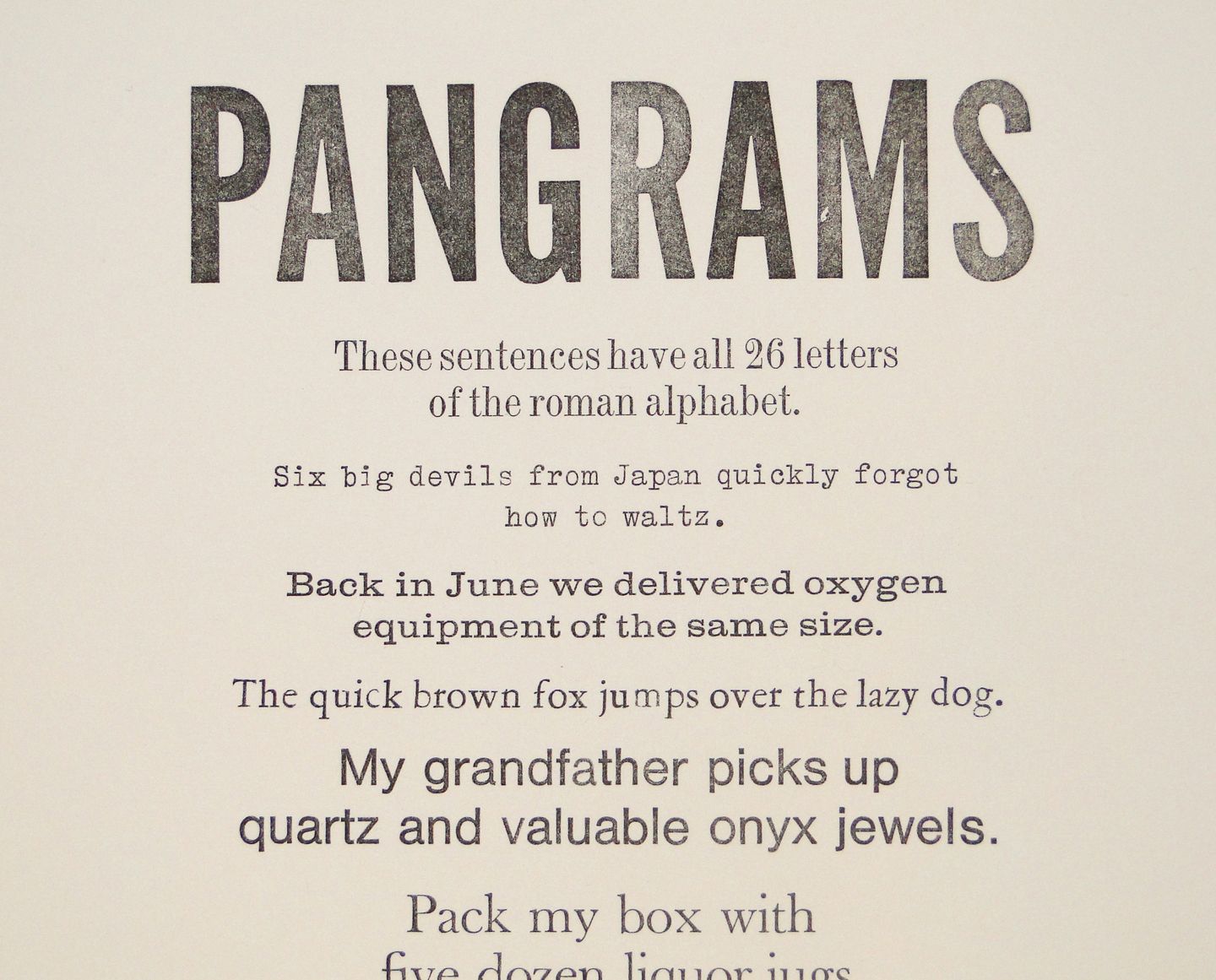The concept of pangrams, sentences that use every letter of the alphabet, is both intriguing and challenging. These unique sentences often serve as useful tools in typography, keyboard layouts, and language learning. In this article, we will delve deep into the fascinating world of pangrams, exploring their history, significance, and some of the most famous examples. Additionally, we will provide tips on how to create your own pangrams and discuss their applications in various fields.
Pangrams are not merely fun linguistic quirks; they also play an essential role in various practical applications. From testing fonts to improving typing skills, pangrams have a significance that extends beyond their surface-level novelty. This article aims to provide a comprehensive understanding of pangrams, their utility, and their historical context.
Whether you are a linguist, a language enthusiast, or simply someone curious about the quirks of the English language, this article will serve as a valuable resource. So, let's dive into the world of pangrams and discover what makes these sentences so special.
Table of Contents
- What is a Pangram?
- History of Pangrams
- Famous Pangrams
- How to Create Your Own Pangram
- Applications of Pangrams
- Pangrams in Different Languages
- Statistics and Data on Pangrams
- Conclusion
What is a Pangram?
A pangram is a sentence that includes every letter of the alphabet at least once. The most well-known example in English is: "The quick brown fox jumps over the lazy dog." This sentence contains all 26 letters of the English alphabet, making it a perfect pangram.
Pangrams can vary in length; some are concise and elegant, while others may be more verbose. The length of a pangram often depends on the creativity of the writer and the specific constraints they choose to impose. The goal is to use all letters without unnecessary repetition or awkward phrasing.
History of Pangrams
The use of pangrams dates back to the early 19th century. The earliest recorded pangram in English is believed to be from the year 1867, which was used for testing typewriters and fonts. Over the years, pangrams have become a tool for various applications, including cryptography and linguistic studies.
Historically, pangrams have been employed in language education to help students familiarize themselves with the alphabet. They are also useful for testing handwriting and calligraphy skills, as they require the writer to use each letter distinctly. Moreover, pangrams have been a source of amusement and creativity, inspiring writers and poets to craft their own variations.
Famous Pangrams
While "The quick brown fox jumps over the lazy dog" is the most famous pangram, there are many other notable examples worth mentioning:
- "Pack my box with five dozen liquor jugs."
- "Jinxed wizards pluck ivy from the big quilt."
- "How vexingly quick daft zebras jump!"
These examples showcase the creativity that can be employed in constructing pangrams, often leading to humorous or whimsical sentences.
How to Create Your Own Pangram
Creating a pangram can be a fun and challenging exercise. Here are some tips to help you craft your own:
- Start with a theme: Choose a theme or context for your pangram to guide your sentence construction.
- List the letters: Write down all the letters of the alphabet and ensure each letter is included in your sentence.
- Be concise: Aim for brevity while ensuring all letters are included; this can be tricky but rewarding.
- Use synonyms: If you find certain letters hard to fit in, consider using synonyms or alternative words.
By following these tips, you can create a unique and engaging pangram that showcases your creativity and command of the language.
Applications of Pangrams
Pangrams have various applications in different fields, including:
- Typography: Designers use pangrams to showcase fonts and typefaces, as they provide a complete representation of the alphabet.
- Language Learning: Teachers utilize pangrams to help students practice writing and recognizing all letters of the alphabet.
- Software Testing: Developers use pangrams to test keyboard layouts and input methods in various software applications.
- Cryptography: Pangrams can be used in cryptographic exercises, as they require the use of all letters in a coded message.
Pangrams in Different Languages
Pangrams exist in many languages, each with its unique challenges and characteristics. Here are a few examples:
- Spanish: "El veloz murciélago hindú comía feliz cardillo y kiwi."
- French: "Portez ce vieux whisky au juge blond qui fume."
- German: "Falsches Üben von Xylophonmusik quält jeden größeren Zwerg."
Each language presents different letters and phonetic sounds, making pangram construction a unique challenge for each linguistic community.
Statistics and Data on Pangrams
According to linguistic studies, pangrams can improve language proficiency and literacy rates, particularly among young learners. Research has shown that exposure to pangrams enhances letter recognition and writing skills.
Additionally, surveys indicate that many people find pangrams enjoyable and engaging, which can motivate language learning. The use of pangrams in educational settings has been linked to increased student interest and participation.
Conclusion
In conclusion, pangrams are more than just amusing sentences; they serve various practical purposes in typography, language education, and creative writing. By understanding the history, significance, and applications of pangrams, we can appreciate their role in the English language and beyond.
Now that you are familiar with pangrams, why not try creating your own? Share your pangrams in the comments below or discuss your favorite examples with fellow language enthusiasts!
Call to Action
If you enjoyed this article on pangrams, consider sharing it with your friends or exploring other language-related topics on our site. Your feedback and engagement are always welcome!
Thank you for reading, and we hope to see you again soon for more exciting articles!
Unlocking Creativity: A Comprehensive Guide To Mouse Drawing
Northeast Alternatives: Exploring The Best Choices For Your Needs
Atlantic Tactical: Your Ultimate Guide To Tactical Gear And Equipment


